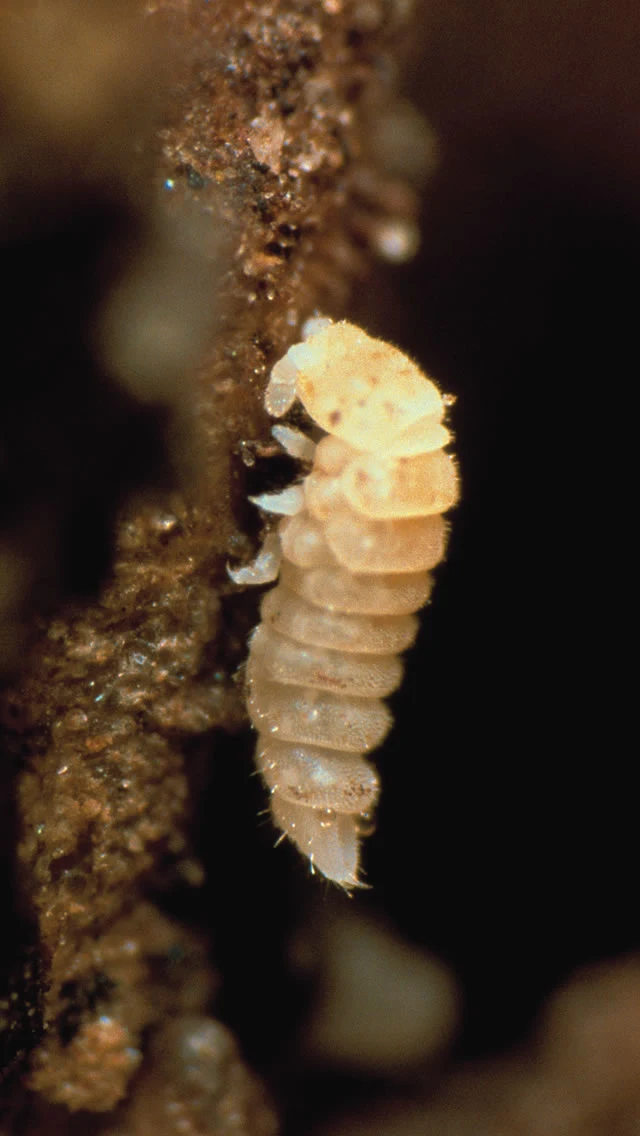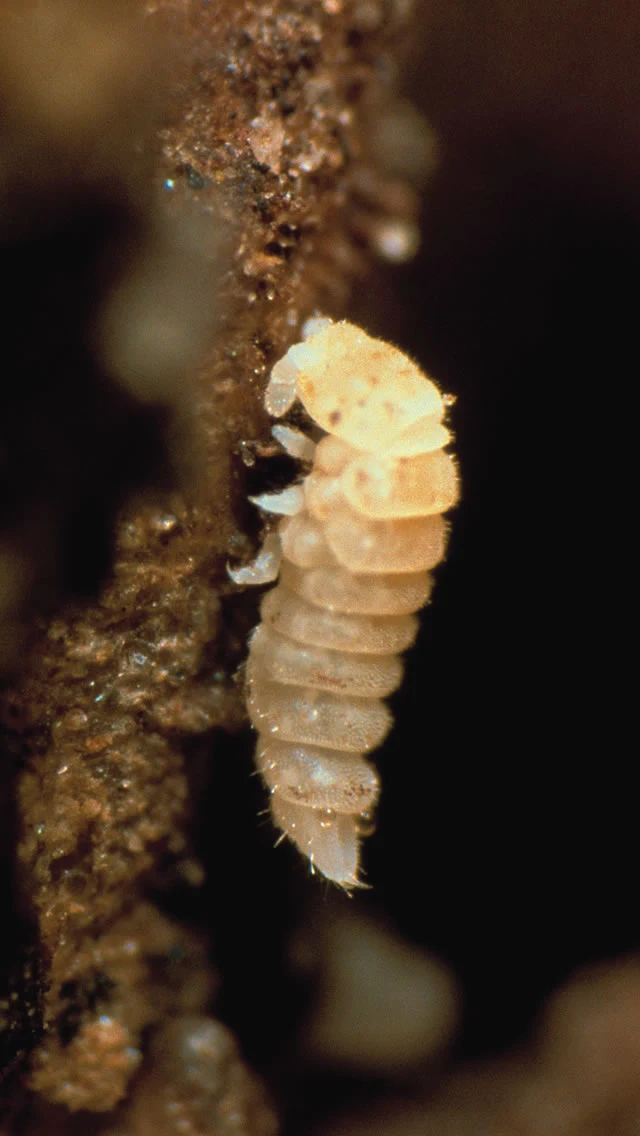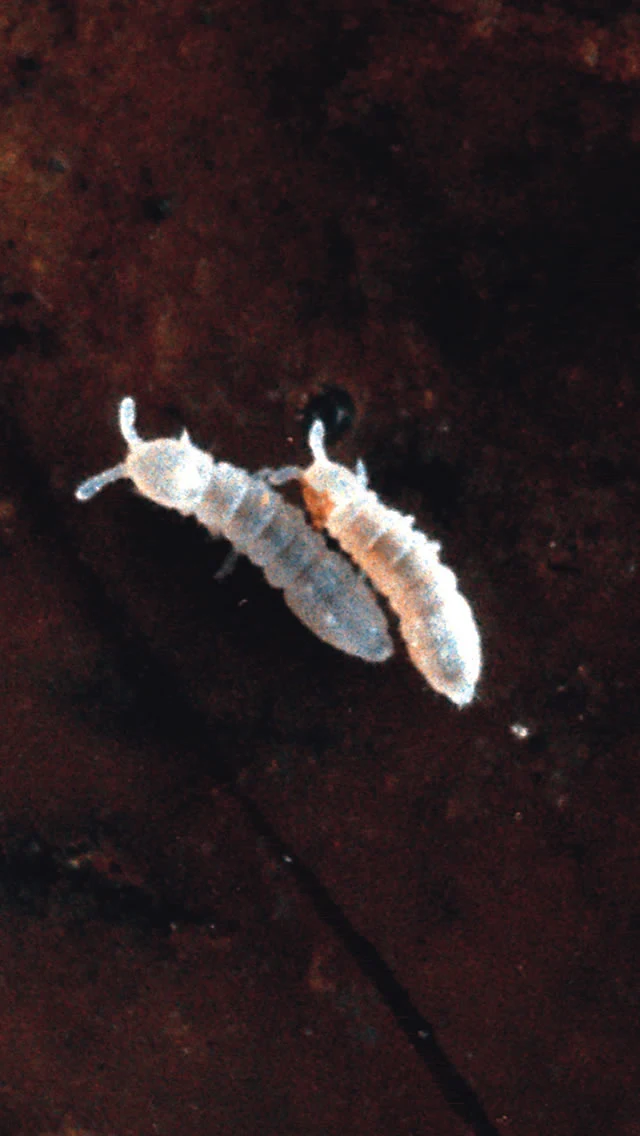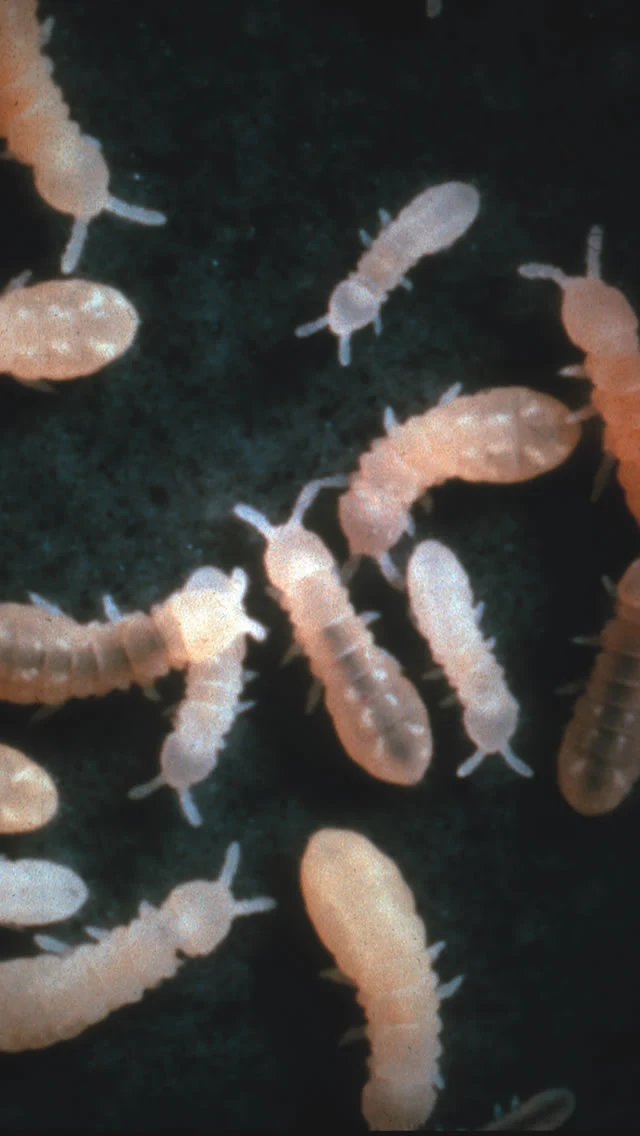
Springtail
Onychiurus spp.
Identification
Springtails are the most abundant of all the soil inhabiting ‘insects’. They are often whitish in colour (root feeding) although others can be dark green to brown (surface feeding), cylindrical, 1-5 mm long and have 6 or fewer abdominal segments.
There are 2 main groups which damage plants, those which live on the surface of the soil and those which live mainly underground. Where soils are rich in organic matter springtails can be present in large numbers.
Most surface living springtails have a forked appendage underneath the abdomen. When threatened this can be released to strike against the ground and enables them to spring into the air to escape from predators.
Springtails are in the order Collembola which some taxonomists do not include in the class Insecta (in some recent studies they have been more closely linked to the Crustacea).
Symptoms
When feeding the springtails leave small holes or pits in the young roots, hypocotyl and cotyledons of emerging plants. These can be checked and in more severe attacks, and where pest populations are high, the plants can collapse and die. The underground species are considered to pose more of a threat to beet crops than those living on the soil surface.
Life-cycle
Eggs are laid in the soil and develop into young springtails which when fully fed develop into mature adults.
Importance
In cold wet conditions damage from springtails can cause plants to fail to emerge and in some instances can be seen as bare patches within fields.
Threshold
None established.

Springtail adult

Springtails

Springtail colony


